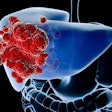
How well does sonelastography evaluate myopathy? Has the performance of ultrasound technologists improved since the first breast density notification law passed in 2009? Is the modality effective for evaluating female infertility? And which is more sensitive for localizing breast cancer in patients already diagnosed: breast MRI or whole-breast ultrasound?
Researchers will address these questions and many more at the upcoming RSNA 2015 meeting in Chicago. A key theme this year for ultrasound is using the modality either in combination with other types of imaging or on its own to diagnose disease, predict its extent, or track treatment.
Some examples? Expect to hear research on using ultrasound or MR elastography to track tendon healing, evaluate inflammatory myopathies, and help breast imagers to assess the extent of ductal carcinoma in situ (DCIS). Also presented this year will be research on using MR/ultrasound fusion to improve prostate biopsy performance and contrast ultrasound to clarify ambiguous renal CT or MR findings.
On the breast imaging side, RSNA attendees will hear about how the modality can help clinicians predict breast tumor response to neoadjuvant chemotherapy, which particular features of breast cancers that are positive for the estrogen receptor manifest on ultrasound, and why follow-up ultrasound may be just fine for tracking abnormal axillary lymph nodes found on screening -- rather than putting a woman through additional axillary ultrasound imaging.
RSNA has planned a number of refresher courses to boost attendees' knowledge, including sessions on ultrasound for gynecologic and breast applications, MR-guided high-intensity focused and musculoskeletal ultrasound, using the modality for thyroid cancer, and ultrasound/photoacoustic molecular imaging.
Finally, meeting participants can check out a few "controversy sessions" that will explore hot topics, such as where ultrasound fits in the task of imaging possible appendicitis in children and whether the modality is more effective than CT for suspected renal colic.
For highlights of just some of the many ultrasound research papers and posters scheduled for presentation at this year's meeting, read on. To view RSNA's complete listing of abstracts for this year's scientific and educational program, click here.




















